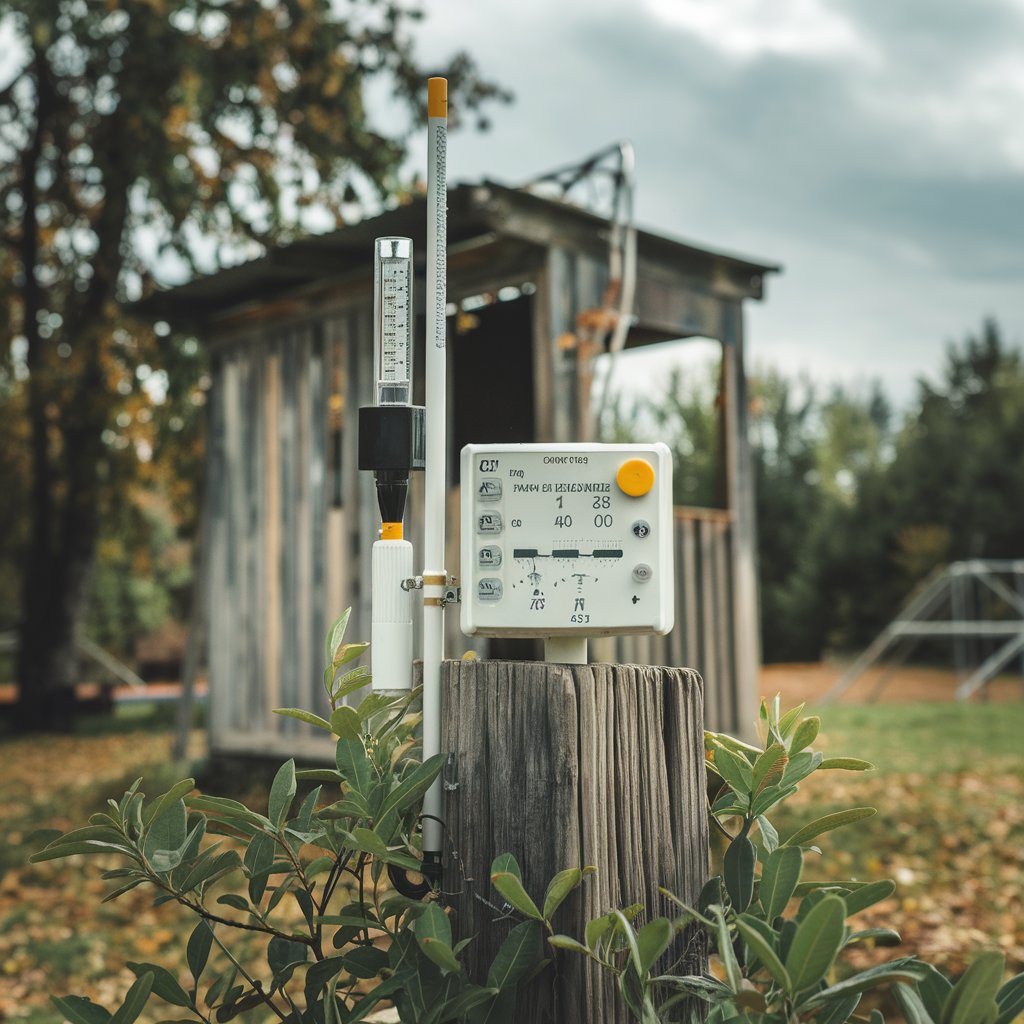As environmental concerns continue to take center stage across the globe, the North America environmental monitoring market is experiencing an unprecedented surge. This growth is largely driven by the increasing urgency surrounding climate change, air and water quality, pollution management, and regulatory compliance. With the rising need for sustainable practices across industries, the demand for environmental monitoring solutions in North America is set to accelerate, positioning the region as a key player in the global market.
Environmental monitoring encompasses the measurement and analysis of various environmental factors such as air and water quality, soil health, noise pollution, and biodiversity. Technologies used in environmental monitoring include advanced sensors, data analytics platforms, and satellite monitoring, which offer real-time and precise data to stakeholders ranging from government agencies to private enterprises. As North America places greater emphasis on sustainability, environmental monitoring has emerged as a critical tool in driving regulatory compliance, public health, and environmental preservation.

Key Drivers of Growth in North America’s Environmental Monitoring Market
Several key factors are contributing to the rapid expansion of the environmental monitoring market in North America. Among the most significant are growing regulatory pressure, increasing environmental awareness, technological advancements, and the rising need for data-driven sustainability practices.
1. Rising Environmental Awareness and Regulatory Pressure
The increasing awareness of environmental issues, coupled with stricter environmental regulations, has created a pressing demand for monitoring solutions. In North America, both the U.S. and Canada have implemented numerous environmental policies aimed at reducing pollution, managing natural resources, and mitigating climate change.
For example, the U.S. Environmental Protection Agency (EPA) has established comprehensive air and water quality monitoring systems that enforce stricter emissions standards for industries and ensure public health safety. Similarly, Canada’s Environmental Monitoring and Assessment Network (EMAN) supports various environmental initiatives, including water quality and biodiversity monitoring.
These regulations create a robust market for environmental monitoring devices and services as industries work to comply with emissions limits, waste management protocols, and sustainability goals. With the emphasis on carbon reduction targets, pollution control, and waste management, the need for advanced monitoring technologies is expected to grow substantially in the coming years.
2. Technological Advancements and IoT Integration
Technological innovations, particularly in Internet of Things (IoT), artificial intelligence (AI), and big data analytics, are transforming the environmental monitoring market in North America. IoT-enabled sensors and devices are increasingly used for continuous, real-time monitoring of air and water quality, soil health, and noise levels, providing valuable data that can help detect early signs of pollution or hazardous conditions.
These devices are capable of transmitting data to centralized systems where AI algorithms analyze and interpret the information to predict trends, identify patterns, and suggest corrective actions. AI is also aiding in the automation of environmental monitoring processes, reducing the need for manual data collection and making monitoring more efficient and cost-effective.
Moreover, advanced satellite technologies are enhancing environmental monitoring by providing macro-level insights into climate changes, deforestation, and carbon emissions. This capability is helping governments, corporations, and NGOs better understand the scope of environmental challenges and take timely action.
Download PDF Brochure @
https://www.marketsandmarkets.com/pdfdownloadNew.asp?id=36880440
3. Sustainability Initiatives Across Industries
Corporate sustainability is now a top priority for many industries in North America, from energy and manufacturing to agriculture and construction. Companies are increasingly adopting green initiatives aimed at reducing their carbon footprint, waste, and overall environmental impact. As part of this transition, businesses are implementing environmental monitoring systems to track their energy consumption, water usage, and emissions data.
In the energy sector, the rise of renewable energy sources—such as solar, wind, and hydropower—has led to an increased demand for monitoring the impact of these energy sources on the environment. Similarly, smart cities and sustainable building practices are being integrated with environmental sensors to monitor air and water quality in urban areas, helping reduce pollution and improve residents’ quality of life.
Industries such as agriculture are also adopting environmental monitoring systems to manage soil health, water usage, and pesticide application in a more sustainable manner. Precision agriculture, which uses data from monitoring systems to optimize crop yields and reduce waste, is a growing trend in North America that is driving market demand.
4. Public Health and Climate Change Concerns
The connection between environmental health and public health is becoming increasingly evident, particularly in the wake of events such as wildfires, industrial accidents, and rising urban pollution levels. North American cities are investing heavily in monitoring air pollution levels to protect the health of their populations.
For instance, ambient air quality monitoring systems can measure pollutants such as particulate matter (PM), carbon monoxide (CO), nitrogen dioxide (NO2), and ozone (O3). Data collected from these systems help authorities issue health advisories, recommend safety measures, and enforce pollution control regulations. The growing incidence of asthma, respiratory diseases, and other pollution-related health issues is driving the demand for better monitoring to ensure public safety.
Furthermore, climate change has increased the frequency of extreme weather events such as hurricanes, droughts, and wildfires. Environmental monitoring systems play a vital role in assessing the environmental impact of these events and developing mitigation strategies to combat their effects.

Major Technologies and Solutions in the Market
Several types of technologies are leading the charge in North America’s environmental monitoring market:
-
Air Quality Monitoring Systems: These systems use sensors to measure levels of various air pollutants such as particulate matter (PM), volatile organic compounds (VOCs), and ozone. IoT-based air quality monitoring systems are enabling real-time tracking and immediate action to mitigate pollution.
-
Water Quality Monitoring: Real-time water monitoring solutions are being deployed across North American cities to ensure safe drinking water and detect contamination from industrial discharges, sewage, or natural pollutants. These systems track parameters like pH, dissolved oxygen, turbidity, and microbial content.
-
Soil and Land Monitoring: Agricultural and industrial land monitoring helps track soil health, moisture levels, and nutrient content. This data aids in sustainable land management, reducing the impact of agricultural practices on the environment.
-
Noise Pollution Monitoring: Urban noise monitoring systems are being used to measure noise pollution levels in cities and ensure they do not exceed health and safety limits. These devices are particularly useful in urban planning and regulatory compliance.
-
Waste Management: Technologies that track waste generation, recycling rates, and landfill usage are helping municipalities and industries reduce waste and improve resource recovery. Smart waste monitoring systems help streamline collection processes and increase recycling rates.
Challenges and Opportunities
While the environmental monitoring market is growing, several challenges remain. High initial costs of monitoring equipment, integration of complex systems, and data management issues are barriers that need to be addressed. However, as costs of technology continue to decrease and the effectiveness of cloud-based solutions improves, more businesses and municipalities are expected to adopt environmental monitoring solutions.
On the opportunity side, government incentives, including grants for sustainability and environmental protection, provide significant growth potential. Moreover, as environmental regulations tighten and industries push towards carbon-neutral goals, the demand for monitoring technologies will continue to rise.
The North America environmental monitoring industry is set for robust growth, fueled by regulatory initiatives, technological advancements, and the increasing push for sustainable practices across industries. As climate change and environmental degradation continue to impact public health and safety, the need for precise, real-time environmental monitoring systems will only grow.
With its integration of advanced technologies like IoT, AI, and satellite monitoring, North America is positioned to lead the global charge in environmental protection and sustainability. Companies, governments, and individuals alike are relying on innovative monitoring solutions to safeguard natural resources and ensure a healthier planet for future generations.
Environmental Sensor companies include:
- Honeywell International Inc. (US),
- Sensirion AG (Switzerland),
- Siemens (Germany),
- ams-OSRAM AG (Austria),
- Bosch Sensortec GmbH (Germany),
- OMRON Corporation (Japan),
- Raritan Inc. (US),
- Texas Instruments Incorporated (US),
- Schneider Electric (France), and
- Amphenol Corporation (US).
FAQ: North America Environmental Monitoring Market
1. What is environmental monitoring? Environmental monitoring refers to the process of systematically collecting and analyzing data on various environmental factors such as air and water quality, noise pollution, soil health, and biodiversity. It uses technologies like sensors, satellites, and real-time data analytics to track the state of the environment and help inform policies and regulations for environmental protection.
2. What is driving the growth of the environmental monitoring market in North America? Several factors are driving the market’s growth, including:
-
Increased environmental awareness among the public and businesses.
-
Stricter environmental regulations from government agencies like the EPA and Canada’s EMAN.
-
Technological advancements, including IoT, AI, and big data analytics, which make monitoring more efficient and cost-effective.
-
Sustainability initiatives across industries such as agriculture, manufacturing, and energy.
-
Rising concerns about public health, climate change, and pollution control.
3. How does environmental monitoring contribute to sustainability? Environmental monitoring helps industries and governments track and manage their environmental impact, allowing them to reduce waste, carbon emissions, and pollution. By using real-time data from monitoring systems, organizations can make informed decisions that contribute to sustainable resource management, eco-friendly production processes, and better public health outcomes.
4. What industries are benefiting from environmental monitoring solutions? Key industries benefiting from environmental monitoring solutions include:
-
Agriculture: For precision farming and sustainable land use.
-
Energy: Particularly renewable energy sources, to ensure minimal environmental impact.
-
Manufacturing: For monitoring emissions and waste management.
-
Construction: To track environmental impacts in urban development and construction projects.
-
Telecommunications and Smart Cities: For air and water quality monitoring to enhance urban living.
-
Healthcare: For assessing environmental factors affecting public health.
5. What types of environmental monitoring systems are used in North America? Several types of systems are employed in the region, including:
-
Air Quality Monitoring: Sensors track pollutants like PM2.5, carbon monoxide, nitrogen dioxide, and ozone.
-
Water Quality Monitoring: Devices that measure parameters such as pH, dissolved oxygen, and turbidity to ensure safe drinking water.
-
Soil Monitoring: For assessing soil quality, moisture, and nutrient levels, often used in agriculture.
-
Noise Pollution Monitoring: Sensors that measure noise levels in urban areas to ensure they don’t exceed safety standards.
-
Waste Management Monitoring: Technologies that track waste production, recycling rates, and landfill use.
6. What are the challenges facing the environmental monitoring market in North America? While the market is growing, it faces challenges such as:
-
High initial costs for advanced monitoring technologies and installation.
-
Data management complexities, including the integration of vast amounts of data from different sources.
-
Regulatory compliance costs for industries that need to adopt these systems to meet evolving environmental standards.
-
Lack of standardized protocols for monitoring systems, which can make comparisons across regions or sectors difficult.
